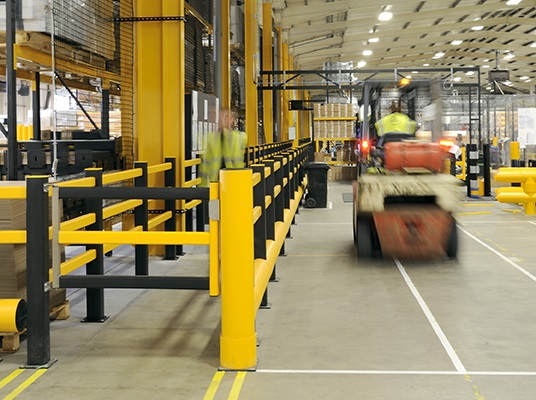Quacking Ducks and Sitting Targets
25th March 2015

Probably, my mother will never forgive me. Cutting corners, doing things on the cheap, replacing the real thing with an inferior imposter. A Neil Diamond tribute act for Mothers Day? I really should have known better.
It was during a particularly ragged and unwieldy rendition of Forever in Blue Jeans, when I glanced towards my mother and our eyes met and she slowly lowered her gaze, as if to say: Nice try, but you cant really substitute a master of American song for a balding bloke with a West Country accent whos had one too many red, red wines, no matter how much he looks like him, can you?
It turns out those quacking ducks that look like ducks and occasionally even sound like ducks, sometimes arent actually ducks at all.
Now, while Neil Diamond might be a matter of life and death to some people, in the slightly less glitzy, but much more practical world of heavy industry, real life and death situations are everyday occurrences. Which means corner cutting and cheap imposters should never, ever cross over into Health & Safety.
Still some businesses see Health & Safety best practice as a bureaucratic spanner in their operational works. Still some businesses apply the flimsiest of Health & Safety procedures, hoping theyll adhere to some vague principal that placates the pesky inspector. And still 150 people die every year at work in the UK alone.
Of course, not every one of those fatalities was down to Health & Safety negligence, but those that were (and its a sizable portion) will be counting the cost for a very long time, not just in financial terms (insurance, fines, productivity loss, legal fees, compensation, admin, loss of reputation) but in the psychological human costs to the victims families, to staff, to the business owners themselves.
This isnt scaremongering. Reduce Health & Safety best practice down to its core in whatever industry and all it asks of responsible business owners is to apply a level of reasonable practicality to their Health & Safety procedures. Sadly, this advice offers no guidance on the quality of products to use and there are a lot of poor imposters out there.
Take something that goes to the very heart of Health & Safety in the modern workplace segregating personnel from workplace vehicles. Any responsible facility manager will mark this as a priority but then what? Procure a few safety barriers, slot them in areas where vehicles and pedestrians crossover and hope for the best?
But what should the barriers be made from? What types of barrier should be used? What about properly managing the flow of traffic and the movement of pedestrians?
It wasnt too long ago that barriers were almost entirely made of steel. While strong, steel is something of a sitting target for FLTs and will crumple on impact. Worse, because steel is inflexible, 100% of impact forces are transferred to the fixtures, which usually means costly floor damage alongside the need for a replacement barrier.
When Yorkshire-based company A-SAFE invented the worlds first fixed polymer safety barrier in 2004 they created a Health & Safety first a barrier that was capable of absorbing the impacts of the vehicles operating within a workplace. They did it by taking a scientific approach analysing the potential forces of FLTs, assessing various angles and heights of impact and inventing a product that they knew could withstand these forces. Then, they implemented a traffic management programme that would only ever see barriers installed as part of a strategic programme which properly managed the flow of vehicles and pedestrians around a facility.
Over a decade later, A-SAFE are the industry leaders in barrier safety, with a client list that includes Coca-Cola, Nestle, Jaguar Landrover, DHL, Unilever and a host of other blue chip companies.
As world leaders, no other barrier company can offer the combined safety, reliability and experience of A-SAFE. The best facility managers know that when it comes down to long-term investments, only the best products will do products that are tested, products that are independently-verified, products that are unbeatable.
Its true that, from a distance, imitators can look like the real thing. But when it comes down to the performance just like our West Country Neil Diamond there really is no substitute for the original and the best.

